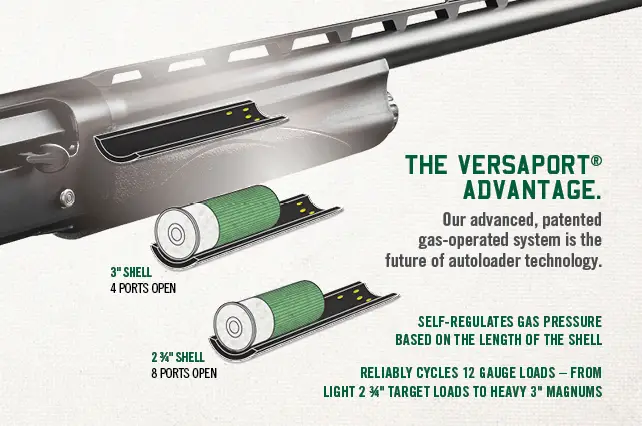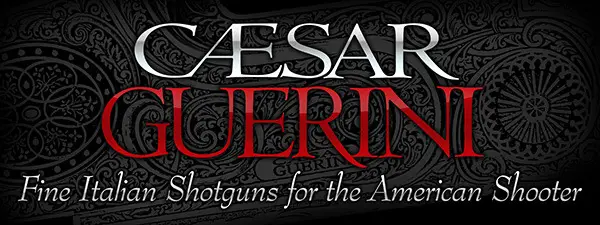


Review: Remington V3 Field Sport Autoloader, Part Three
The general availability of the first series of V3 models is estimated to be late Spring to early Summer 2015. It may be a bit sooner, but manufacturers are getting leery about publishing actual dates. If “May 1st” was the availability date, sure enough, on May 2nd everyone who didn't find a V3 in stock two miles down the street would be spitting a few hateballs of some sort. It happens every year.
One thing that is hard to ignore when it comes to several of the new “revolutionary models” is the lack of follow-through. For example, the Vinci, the Maxus, the A300 Outlander, the A5 . . . where are the 20 gauges? One might think if a shotgun was revolutionary of any consequence, there would be enough confidence to offer a full line from the economy models to target models, to upgrade field models, and the 20 gauge at the very least would not be ignored.
It sounds like Remington has thought this one through, though, for the V3 platform is expected to be released in tactical, sporting, youth, and upscale models with (at least) a line of 20 gauge V3 models already in the works. As much as I personally use 20 gauges, the initial 12 gauge launch does make sense. The 12 gauge, rightly or wrongly, outsells all other gauges combined by no small margin. The 20 gauge is secure in second place, but sales of every other bore is trivial compared to the 12 and 20.
The design of the V3 makes several model variations easy to accomplish, with no mainspring and tube in the buttstock to consider. It means that youth stocks, steadygrip type stocks, folding stocks, and so forth is largely just a matter of screwing them on.
Back in 2010, I did an “improbable comparison” of three then-new autoloaders. Here is part of the way they stacked up. I'm inserting the Remington V3 prototype along with the previous data.
LOWEST
PRICE TO HIGHEST PRICE (in 2010)
The Remington V3 (2015) has a $895 MSRP for black
synthetic, $995.00 for the camo or walnut models.
The lowest-price configuration available for any of these three shotguns
would be the three-inch chambered version of the Maxus Stalker at $1199
MSRP. The Vinci and the 3-1/2 inch Maxus models are almost identically
priced. The most expensive of the three is the A400 with KO at $1725 MSRP.
WEIGHT,
AS MEASURED
Maxus Stalker 3-1/2 in., 28 inch barrel: 6 lbs. 15 oz. ($1379 MSRP, $1509
MODB Camo))
Vinci, MAX-4 Camo, 26 inch: 7 lbs., 1 oz. ($1479 MSRP, $1379 black synthetic)
A400, non-KO, 28 inch: 6 lbs. 13 oz. ($1625 MSRP, $1725 w/ KO)
V3, 7 lbs., 5.5 oz. ($895 black synthetic)
TRIGGER
BREAK, AS MEASURED
Maxus: 6 lbs.
Vinci: 5 lbs.
A400: 4-3/4 lbs.
V3: 4-1/4 – 4-1/2 lbs.
WARRANTY
Maxus: No written warranty.
Vinci: Five years.
A400: One year.
V3: Two years.
The big eye-catcher for many folks is the sticker price, $300 or more less than the cheapest of the cited 2010 models at 2010 prices, the Browning Maxus Stalker 3 inch. In 2015, the retail price of the 3 inch Maxus Stalker is $1379.99. Today, the V3 retails for a whopping $484 less than a Maxus with the same configuration. At 35% less than a directly competitive model, the Made in the USA Remington V3 is going to be very hard to ignore.

I've spent a lot of time cleaning so-called self-cleaning actions, to
make an understatement and many so-called “self-compensating”
actions are clearly not. In the V3's Versaport array, you have a total
of eight gas ports, all of which are utilized with 2-3/4 inch unfolded
length shells. When you fire 3 inch unfolded length shells, half of them
are automatically blocked off leaving four ports that flow gas. So, close
to the chamber, you have two basic gas flow levels: one for target and
primarily lead hunting loads and “stage two” for 3 inch waterfowl
and 3 inch turkey loads for example.
It doesn't stop there, though, for Remington took into consideration the significant difference between a 1 oz. 2-3/4 inch shotshell and the other end of 2-3/4 inch load intensity: the 1-1/2 oz. 2-3/4 inch “Baby Magnum.” Both of the short-stroke pistons have additional gas bleeds, at the end of the piston channels. In the case of 1 oz. target loads, they aren't used. In the case of the more energetic 1-3/8 oz. pheasant loads and 1-1/2 oz. Baby Magnums, they vent off excess gas which keeps the bolt speed down.
The same holds true with 3 inch loads, for steel loads for waterfowl are typically 1-1/4 oz. payloads at 1400 – 1450 fps 3 foot velocity, while the “blocker” type pheasant load is 1-5/8 oz. of lead at 1350 fps, a lead turkey load may well be 1-3/4 oz. @ 1300 fps, or 2 oz. at 1150 fps. Again, this helps maintain consistent bolt speed, avoids excessive ejection, and lowers felt vibration levels of the hotter loads.
The following video should give you a good idea of how well the V3 runs.
http://randywakeman.com/ReviewRemingtonV3FieldSportAutoloaderFinale.htm wraps it up until production models can be evaluated.
Copyright 2015 by Randy Wakeman. All Rights Reserved.




